"Shows expedition from Tatlayoko Lake and climb up Mt. Reliance" British Columbia Archives.
This film was produced in the late 1930s.
"In Mount Vernon Seminary, the T. W. Willard Motion Picture Company has made a remarkable Kodachrome publicity picture. No interior was too large for their color work, as is clearly shown by the fine shots of a "prom." Large rooms with groups of girls taken by artificial light were rendered in true colors with striking effect. The film demonstrates quite clearly how successfully color can be used in industrial and publicity filming and that no special limitations are involved. The most attractive titles were double exposed on well chosen bits of school scenery. The film has an air of friendliness and polish that is entirely in keeping with the spirit of the school it portrays. Just enough of the right things are shown to make a favorable impression on prospective patrons of the school." Movie Makers, Dec. 1936, 548.
"Shows Don and Phyllis Munday on an expedition to climb Mount Waddington, via Franklin Valley, Franklin Glacier, Dais Glacier, etc." British Columbia Archives.
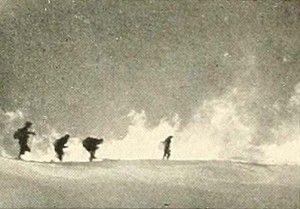
"A down mountain ski run, etched against a filtered sky and set in a world of fantastic snow shapes and incredible beauty, is the theme of Mount Zao, which was filmed on the Japanese mountain of that name. Khoji Tsukamoto has mastered the technique of back lighting the dramatic turns, stems and jumps of a down mountain run so that they are framed against luminous clouds of powdered snow. The ski runners are always preceded by an ubiquitous cameraman who has invariably chosen the most effective angle for each scene of his closely knit sequences. The result is as smooth a picture of skiing as the screen has seen. In sequencing, editing and the nuances of tempo, this film is near the top. And particularly praiseworthy is the way in which the cameraman has involved backgrounds of astonishing natural beauty with foregrounds of interest compelling action." Movie Makers, Dec. 1937, 603, 626.
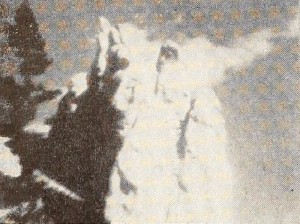
"With a thorough understanding of what constitutes human interest, L. Gordon Darby has produced in Mountain Playground an attractive record of the Banff-Jasper National Park area. Present, to be sure, are the majestic peaks, the Banff Springs Hotel with its surrounding flower gardens, Lake Louise and a picturesque river trip. But there are presented also the darting antics of a chipmunk, the dainty distrust of a cautious deer and the hungry bear within arm's reach of the camera. If camera steadiness had not been sacrificed for the ease of the hand-held camera, this attractive travelog might well have contended for higher honors." Movie Makers, Dec. 1952, 340.
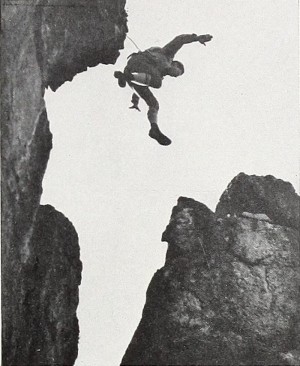
"The Mountaineers Club Teton Expedition, made by Ray Garner, tells the story of several young men who did some real mountain climbing among the peaks of famous Western mountains. A most interesting introduction, showing briefly the various types of climbing, prepared the audience for some of the amazing sequences later on. Remarkable attention to human interest details sustains the entertainment quality throughout and, when the actual climbing starts, the thrills are second to none. The agility of the cameraman contributed greatly to the effectiveness of the film." Movie Makers, Dec, 1936, 550.
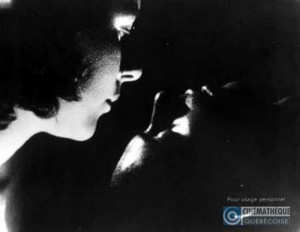
"Distinctive for its superb blend of old and new visual techniques coupled with an unusual sound track, the film was unanimously selected as the winning entry [in the amateur category at the Canadian Film Awards in 1950]" (Topalovich, 10).
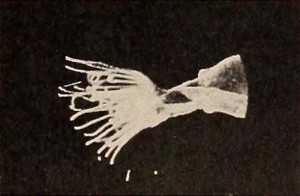
"The eagerness of a movie maker to use a new cine camera is the clever introduction and leitmotivof Movie Bugs, an exceedingly well photographed picture by Dr. Frederick W. Brock. The picture tells how the movie maker protagonist gets in touch with a science teacher and how the two of them construct a support for the camera for use with it in filming through a microscope. The succeeding shots of hydrae and paramecia and other microscopic organisms are beautifully filmed, and the picture infers the obvious conclusion that any university zoology department should be equipped to make such studies. Clean cut interior lighting and a well knit story distinguish this fine filming job." Movie Makers, Dec. 1938, 620.
"Film of members of the Toronto Movie Club filming fruit tree blossoms and scenery at the Woodley family property at West Hill." Library and Archives Canada.
Total Pages: 299